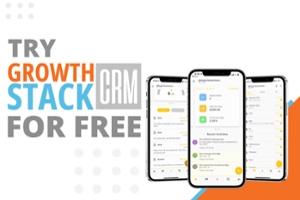How to Determine the ROI of Developing an App for Your Business
A great mobile app can be a fantastic investment for your business. These days, people are spending more time than ever on their smartphones.
Your customers use their devices to access and read your content before buying products from you online, while your employees turn to smartphone apps to interact with colleagues and stay as productive as possible.
When used correctly, app development is a great way to facilitate communication between your team members and make data access easier for employees. A great app also helps you track essential metrics for business productivity.
Of course, there are various expenses associated with building an app. You’ll need a professional to help you develop something that works well for your team. You’ll also have to consider the costs of maintaining your app.
So, how do you decide whether the ROI for your app is worth it?
The following steps will help. 
Step 1: Define Your Goals
The most crucial step in identifying ROI for anything – whether it’s an app or a marketing campaign – is knowing what you hope to accomplish.
Think about what you’d like to achieve when you create your new app. Are you looking for an easy way to improve your interactions with customers and make sure you offer a meaningful service? Do you need a solution to enhance collaboration and support your team members when they’re out in the field?
A good app can improve the efficiency of your workforce, boost productivity, increase your bottom line, and even improve customer satisfaction. Knowing your main objective from day one also helps you figure out what you should measure to determine whether your app is a success.
Additionally, setting a well-defined goal will give you the guidance you need to lead your app developer into creating a product with the right features and functionality. Without a proper vision, it is easy to get confused and waste resources.
Step 2: Calculate App Development Costs
Determining how expensive your app is going to be is the next step in calculating ROI. To understand your return on investment, you need to compare the amount of money you’re going to spend on your new app with how much you can earn in return.
App development isn’t nearly as expensive as it once was. However, if you want a developer with a variety of skills or an app with plenty of features, you may need to be ready to spend a little more.
When calculating costs, remember to think about the expenses associated with app implementation and support or integration services too.
App development is rapidly changing. That means that some technologies your development team uses today might become obsolete in a matter of months.
Your business could benefit from following the latest trends affecting app development because it ensures that you have an app that can stand the test of time.
On the other hand, some of these technologies are still quite costly to implement. That’s why you’ll have to work closely with the development team to ensure you get a top-notch app without investing a lot of money into features that don’t serve your overall business goals.
If you're going to need help from a specialist to do something specific, such as managing transactions or supporting video conferencing, you'll need to keep that in mind. Don't forget to have money aside for maintenance too.
Step 3: Give Each App a Measurable KPI
Key Performance Indicators are business metrics used to evaluate the factors crucial for your company’s success.
When you decide to develop your business app, your Key Performance Indicators will show you if your app is delivering the results you wanted when you started your journey.
KPIs can differ from one company to the next. Some brands will consider customer loyalty to be the most important performance indicator for their team. This might mean they measure things like how many repeat customers they have signed up to the app. Other companies might focus on retention rates or conversion opportunities.
Establishing what your KPIs are and how you plan on measuring them will give you a focus point when you begin tracking the success of your new investment.
For instance, if you aim to increase the number of interactions you have with new users, you might need to start by determining whether your app is acquiring new customers in the first place. You can measure your success by looking at how many new clients you gain when your app goes live.
If you measure workplace efficiency, then the metrics you’ll need to look at will be the ones that demonstrate employees’ performance. For instance, you might measure how quickly your teams complete projects and how often you meet deadlines.
Step 4: Weigh Outcomes Against Cost
Once you’ve given your app a set of measurable KPIs to track whether your campaigns are successful or not, you’ll be in the perfect position to determine the worth of your app. Start by getting a comprehensive insight into how much your app is costing you, complete with maintenance and roll-out costs.
Have a projected lifespan of your app in mind to establish how much money you can earn back on your app over the years ahead. For instance, you might look at the potential ROI from your app for over ten years.
Using your metrics, determine the average return you’ll get from your investment to see whether it outweighs the app's total cost. For instance, how much money are you saving on lost customers who don’t come back to your business because you take too long to deliver on your promises?
If your team becomes more productive and efficient, it will prevent you from losing business. More often than not, you’ll find that the overall value of your app is a lot greater than the price you pay to create the technology.
Step 5: Don’t Forget the Intangibles
The easiest way to measure the ROI of an app is to look at measurable metrics. If you want your app to create more productive employees in your workplace, it makes sense to measure things like how many tasks your team members complete each day and how you meet client deadlines. However, it's worth remembering the intangible benefits of your app too.
Aside from making your team members more productive, your app could also lead to an increase in brand reputation. For instance, if your employees start implementing processes that enhance efficiency, they will complete tasks faster and provide better service to your customers. This will ultimately improve your brand’s customer satisfaction score and may even lead to acquiring new clients in the future.
Having your own app could also help you to maintain and engage your team members, which means that you’re less likely to deal with the various expenses associated with regular employee turnover.
Measuring the Value of Your App
As the world shifts into a more digital environment, many companies are experimenting with the idea of app development.
The right app can help you improve the efficiency and productivity of your team. A good app is also an excellent way to strengthen your connections with your customers and attract new opportunities in the long run.
However, just like any business investment, it’s essential to ensure that the money you spend on your app will ultimately be worth it over time. Calculating the ROI of your app will help to show you that investing in this new technology is worth the effort.
It also means that you can get some much-needed buy-in from the people at the head of your business. So what are you waiting for? Go and start calculating!
About the Author:
Heather Redding is a content manager for rent, hailing from Aurora. She loves to geek out writing about wearables, IoT and other hot tech trends. When she finds the time to detach from her keyboard, she enjoys her Kindle library and a hot coffee. Reach out to her on Twitter.
Get Better Results from Your Online Presence with the Business GrowthStack
Regardless of whether you decide to create an App or not, you won’t be able to attract your audience and convert them into customers without a strategic marketing machine in place.
That’s where the Business GrowthStack comes in. Based on the tried-and-true framework laid out in Steve Brown’s book The Golden Toilet, this four-step system transforms your website, emails, content, and more into a lead-nurturing and sales-generating system.
Ready to start getting an ROI from all your hard work? Schedule a free strategy session to find out how our team can grow your business using the Business GrowthStack. Or enroll in the QuickStart Academy and learn how to implement the system yourself!






